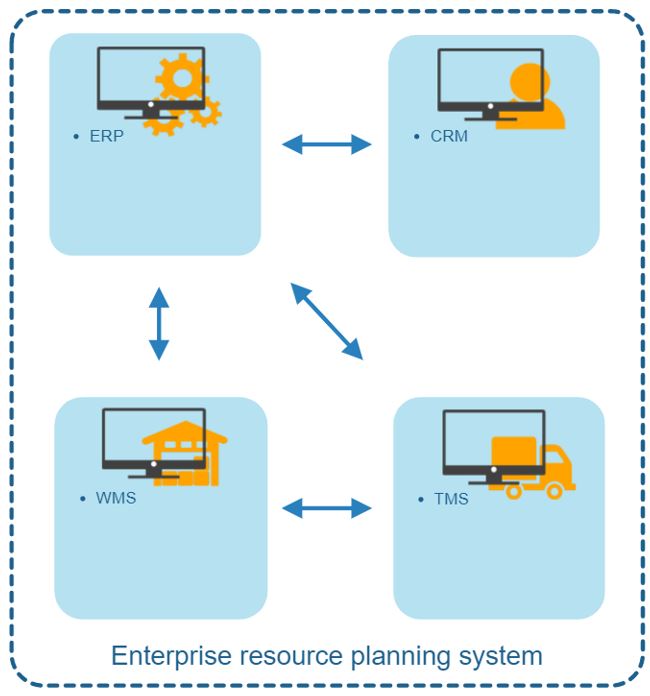ERP stands for Enterprise Resource Planning and this term generally refers to a technological solution used by larger organizations to manage the different functions of their businesses and their interactions.
Departments or functions such as sales and marketing, procurement and purchasing, project management, production/manufacturing, finance/accounting, customer relationship management, human resources, compliance, and supply chain operations may all be included in some way or other in a larger encompassing ERP.
The overall purpose of an ERP is to improve visibility, increase efficiency, enhance collaboration, automate many back-office functions, and bring cost savings.
From a logistics standpoint, an ERP – has shown in the below diagram – should include or be connected with a TMS (Transport Management System) and/or a WMS (Warehouse Management System) and logistics related information should flow between these systems.


